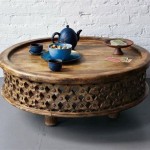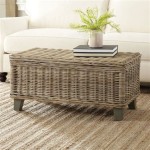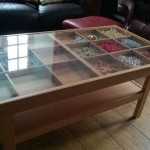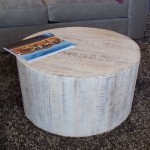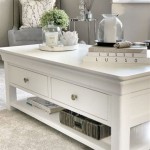How To Style a Coffee Table With Books
The coffee table, often positioned as the centerpiece of a living room, presents a prime opportunity to express personal style and enhance the aesthetic appeal of the space. While often overlooked, thoughtful styling of this surface can contribute significantly to the overall ambiance of the room. One of the most effective and versatile elements for coffee table styling is books. When curated and arranged strategically, books can add depth, visual interest, and intellectual sophistication. This article will detail how to effectively style a coffee table using books, exploring various approaches and providing practical tips for creating a visually appealing and functional arrangement.
The selection of books forms the foundational layer of any successful coffee table arrangement. The books chosen should reflect the interests and personality of the homeowner, creating a cohesive and meaningful display. Avoid selecting books solely based on their cover; instead, consider the content and how it resonates with the overall style of the room. A collection of art books, travel guides, or biographies can serve as a source of conversation and provide insights into the homeowner's passions. The physical appearance of the books, including their size, color, and texture, should also be considered to ensure a harmonious and visually pleasing arrangement. Hardcover books generally lend themselves better to coffee table styling due to their sturdiness and visual weight, but incorporating paperback books with interesting covers can add a touch of casual charm.
Scale is a crucial element to consider when selecting books for a coffee table. The size of the table should dictate the appropriate size and number of books. A large coffee table can accommodate several stacks of books, while a smaller table might only allow for a single, carefully curated selection. A mix of book sizes can create visual interest and prevent the arrangement from appearing static. Consider stacking larger, heavier books at the bottom and topping them with smaller, more delicate volumes. This creates a sense of balance and prevents the arrangement from feeling overwhelming. Avoid overcrowding the table with too many books, as this can make the space feel cluttered and disorganized. A minimalist approach is often more effective than an overly elaborate display.
Color plays a significant role in the overall aesthetic of a coffee table arrangement. The color scheme of the books should complement the existing décor of the living room. Neutral-toned books with subtle variations in texture can create a sophisticated and understated look. Alternatively, brightly colored books can add a pop of vibrancy and personality to a more muted space. Consider creating a cohesive color palette by selecting books with similar hues or by grouping books with contrasting colors for a more dramatic effect. Dust jackets can be a powerful tool for manipulating the color scheme of a book collection. If the original dust jackets clash with the desired aesthetic, consider removing them or replacing them with custom-made jackets in a more suitable color or pattern.
Texture adds another layer of visual interest to a coffee table arrangement. Books come in a variety of textures, from smooth, glossy covers to rough, textured paper. Mixing different textures can create a more dynamic and engaging display. Incorporating books with fabric covers, leather bindings, or embossed details can add tactile appeal to the arrangement. Consider layering textures by placing a smooth, glossy book on top of a rough, woven mat or by pairing a leather-bound book with a delicate glass vase. The interplay of textures can elevate the overall aesthetic of the coffee table and make it a more inviting and visually appealing space.
Creating Balanced Stacks
Arranging books in balanced stacks is essential for creating a visually appealing coffee table display. A balanced stack doesn’t necessarily mean perfectly symmetrical; rather, it refers to an arrangement that feels stable and harmonious. The number of books in each stack should be proportionate to the size of the coffee table and the other decorative elements on display. As a general guideline, avoid stacks that are too tall or too short, as these can disrupt the overall balance of the arrangement. Layering books of different sizes and thicknesses within each stack can create visual interest and prevent the arrangement from appearing monotonous. Place the largest and sturdiest books at the bottom of the stack to provide a solid foundation, and gradually transition to smaller and lighter books towards the top. Consider offsetting the alignment of the books slightly within each stack to create a more relaxed and informal look. This can be achieved by gently pushing the books forward or backward, creating a subtle sense of movement and preventing the arrangement from appearing too rigid.
The placement of the stacks on the coffee table is also crucial for achieving balance. Consider the overall shape and size of the table when determining where to position the stacks. On a rectangular table, a single stack placed slightly off-center can create a visually dynamic arrangement. Alternatively, two or three stacks placed at varying distances from each other can create a more balanced and symmetrical look. On a round coffee table, a central stack surrounded by smaller decorative objects can serve as a focal point. The key is to avoid creating an overly symmetrical or predictable arrangement. Experiment with different layouts and placements until a visually pleasing and balanced composition is achieved.
To enhance the visual interest of the book stacks, consider incorporating decorative objects on top of them. A small sculpture, a delicate vase, or a collection of interesting stones can add personality and visual appeal to the arrangement. When selecting decorative objects, consider their size, shape, and color. The objects should be proportionate to the size of the book stacks and should complement the overall aesthetic of the living room. Avoid overcrowding the stacks with too many objects, as this can make the space feel cluttered and disorganized. A single, carefully chosen object is often more effective than a collection of smaller, less significant items.
Incorporating Other Decorative Elements
While books form the primary element in this styling approach, incorporating other decorative elements is essential for creating a well-rounded and visually appealing coffee table arrangement. These elements can add texture, color, and visual interest, preventing the arrangement from appearing one-dimensional. Trays, candles, plants, and decorative objects can all be used to enhance the overall aesthetic of the coffee table. The key is to select elements that complement the books and contribute to the overall style of the room. Consider the size and shape of the coffee table when selecting decorative elements. A large coffee table can accommodate a wider range of objects, while a smaller table might require a more minimalist approach.
Trays are a versatile and functional addition to any coffee table arrangement. They can be used to corral smaller objects, such as candles, remote controls, or coasters, creating a sense of order and preventing the table from appearing cluttered. Trays also provide a visual anchor for the arrangement, defining a specific space and preventing objects from straying. When selecting a tray, consider its size, shape, and material. A tray made of natural materials, such as wood or rattan, can add warmth and texture to the arrangement. A metal tray can add a touch of sleekness and sophistication. The tray should be large enough to accommodate the desired objects without overcrowding the space.
Candles are another excellent addition to a coffee table arrangement. They add warmth, ambiance, and a subtle fragrance to the room. Candles come in a variety of shapes, sizes, and scents, allowing for customization to suit individual preferences. Consider using candles of varying heights to create visual interest. A tall pillar candle can serve as a focal point, while smaller votive candles can add subtle accents. Scented candles can provide a pleasant aroma, but avoid scents that are too overpowering. Opt for subtle and natural scents, such as lavender, vanilla, or sandalwood. When placing candles on a coffee table, ensure they are positioned away from flammable materials and are within easy reach for extinguishing.
Maintaining Functionality
While aesthetics are important, maintaining functionality is crucial when styling a coffee table. The coffee table should be a practical and usable surface, not just a decorative display. Consider the primary function of the coffee table when selecting and arranging books and other decorative elements. If the coffee table is frequently used for serving drinks and snacks, ensure there is ample space for these items. Avoid overcrowding the table with too many objects, as this can make it difficult to use. A tray can be used to corral drinks and snacks, preventing spills and protecting the surface of the table. Coasters should always be readily available to protect the table from water rings.
Consider the accessibility of the books when styling the coffee table. The books should be easily accessible for browsing and reading. Avoid stacking the books too high or placing them in a way that makes them difficult to reach. The goal is to create an inviting and functional space that encourages interaction with the books. If the coffee table is frequently used for working or studying, ensure there is adequate lighting. A table lamp can provide task lighting and create a more comfortable and productive work environment.
The arrangement of the coffee table should be flexible and adaptable. The books and decorative elements should be easy to rearrange or remove as needed. This allows for customization to suit different occasions and activities. For example, the books can be rearranged to create more space for serving drinks during a party. The decorative elements can be swapped out to reflect seasonal changes or personal preferences. Regularly decluttering the coffee table is essential for maintaining functionality. Remove any unnecessary items, such as old magazines or loose papers, to keep the space clean and organized. A well-maintained coffee table is both visually appealing and functional, enhancing the overall atmosphere of the living room.

5 Clever Ways To Style Coffee Table Books Gdc Furniture

Interiors Styling Coffee Table Books The Style Fairy

Coffee Table Books For Design Home With Keki

5 Simple Tips For Decorating With Coffee Table Books A Round Up Zdesign At Home

How To Add Style Your Coffee Table Styling Tips Living Room Home With Keki

The Best Coffee Table Books And How To Style Them Everygirl

Coffee Table Books And How To Style Them Fab Home Blog
How To Style Your Coffee Table With Books Lauren Saylor Interiors Design A Fabulous Fete Wedding Invitations Stationery

The Best Ideas To Style A Pretty Fashion Coffee Table Books Decor Coffe Decorating Tables

How To Style Coffee Table Books My Top 20 Favorites
Related Posts

